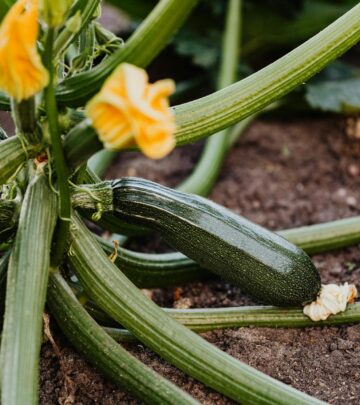Growing Lily-of-the-Valley: A Charming Shade Garden Perennial
Discover the enchanting beauty and sweet fragrance of lily-of-the-valley for your shade garden landscape

Growing Lily-of-the-Valley: A Charming Shade Garden Perennial
Lily-of-the-valley (Convallaria majalis) is a classic, old-fashioned perennial that has enchanted gardeners for generations with its delicate, fragrant bell-shaped flowers and lush green foliage. This woodland native thrives in shady gardens, creating a carpet of green topped with sweetly scented white blooms in spring. Whether you’re looking to fill a difficult shady spot or add a traditional touch to your garden, lily-of-the-valley offers timeless charm and relatively easy care once established.
About Lily-of-the-Valley
Lily-of-the-valley is a low-growing perennial that spreads via underground rhizomes to form dense colonies over time. Its distinctive nodding white bells emerge in spring, creating a beautiful contrast against the broad, oval-shaped green leaves. The sweet, distinctive fragrance has made it a favorite for bridal bouquets and spring arrangements for centuries.
Despite its delicate appearance, lily-of-the-valley is a surprisingly robust plant, hardy in USDA zones 3-8. It reaches a modest height of 8-12 inches, making it perfect for woodland settings, shade gardens, and as a ground cover beneath trees and shrubs where other plants might struggle.
Growing Conditions
While often considered exclusively a shade plant, lily-of-the-valley is more versatile than many gardeners realize. Understanding its preferred growing conditions will help ensure success with this charming perennial.
Light Requirements
Lily-of-the-valley thrives in partial to full shade, making it ideal for woodland gardens or north-facing areas where many flowering plants struggle. While it’s primarily known as a shade-lover, it can also perform well in full sun in cooler climates. However, in warmer regions, protection from intense afternoon sun is essential to prevent leaf scorch.
Interestingly, while lily-of-the-valley tolerates deep shade, it may not bloom as prolifically in very dark conditions. For best flowering, aim for dappled light or morning sun with afternoon shade.
Soil Preferences
The ideal soil for lily-of-the-valley is moist, well-drained, and rich in organic matter – similar to what you’d find in a natural woodland setting. While it can adapt to various soil types, it performs best in soil enhanced with compost or leaf mold. These additions help retain moisture while improving drainage, creating the perfect balance lily-of-the-valley prefers.
Before planting, consider working several shovelfuls of compost, well-rotted manure, or leaf mold into your planting area. This simple step will give your lily-of-the-valley a strong start and promote vigorous growth.
Water and Humidity
Consistent moisture is key for lily-of-the-valley, especially during establishment and the growing season. While mature plants have some drought tolerance once established, they prefer regular watering during dry spells. The soil should be kept evenly moist but not waterlogged.
Mulching around plants with compost, shredded leaves, or bark chips helps retain soil moisture and suppresses weeds, creating conditions similar to their natural woodland habitat.
Planting Lily-of-the-Valley
Lily-of-the-valley is typically planted from pips (small rhizome segments with roots attached) or by dividing existing clumps. With proper preparation, these plants establish quickly and will spread to form a lush ground cover.
When to Plant
Early spring and fall are the ideal times to plant lily-of-the-valley. Spring planting allows the pips to establish before summer heat arrives, while fall planting gives the roots time to develop before winter dormancy. If planting in fall, apply a light layer of mulch before the ground freezes to prevent frost heaving of newly planted pips.
Planting Process
- Before planting, soak the pips in lukewarm water for several hours until they begin to swell.
- Prepare the planting area by incorporating organic matter into the soil.
- Plant pips about 1 inch below the soil surface with the narrow tips pointing upward and roots facing down.
- Space pips 6-8 inches apart to allow room for spreading.
- Water thoroughly after planting to settle the soil around the roots.
Don’t be concerned if your planting looks sparse initially. Lily-of-the-valley typically fills in during the second growing season as the rhizomes spread underground.
Caring for Lily-of-the-Valley
Once established, lily-of-the-valley requires minimal maintenance, making it an excellent choice for busy gardeners or those seeking low-maintenance perennials for challenging spots.
Watering and Fertilizing
Regular watering during the first growing season helps establish a strong root system. After establishment, water during dry periods, but otherwise, rainfall is usually sufficient in most regions. A yearly application of compost or a light feeding with a balanced organic fertilizer in early spring provides all the nutrients lily-of-the-valley needs.
Mulching
A 2-3 inch layer of organic mulch such as shredded leaves, compost, or bark chips helps maintain soil moisture, suppress weeds, and add organic matter as it breaks down. Refresh the mulch annually in spring as needed.
Pruning and Maintenance
Lily-of-the-valley requires minimal pruning. After flowering, you may remove spent flower stalks if desired, but this isn’t necessary. The foliage should be left intact until it yellows naturally in fall, as it continues to feed the rhizomes for next year’s growth. Once foliage turns yellow, it can be cut back to ground level.
To promote spreading in the first year, pick any berries as soon as they appear (wearing gloves and washing hands afterward), as this prevents the plant from directing energy into seed production rather than rhizome development.
Division
Over time, lily-of-the-valley can become congested, which may reduce flowering. Dividing clumps every 5-7 years helps rejuvenate the planting and provides an opportunity to expand your garden or share with friends. The best time to divide lily-of-the-valley is in early fall or early spring when the plants are dormant.
To divide, dig up a section of the colony, gently separate the rhizomes, and replant immediately, following the original planting guidelines. After division, apply a generous mulch of composted leaf mold to help the divisions establish.
Controlling Spread
While lily-of-the-valley’s spreading habit makes it an excellent ground cover, it can become invasive in ideal conditions. Several strategies can help keep it within bounds:
- Install physical barriers such as buried plastic edging extending about 10 inches deep around the planting area.
- Plant in large containers (10-15 liters) buried in the ground, checking every few years to prevent escape.
- Position plantings where natural boundaries like pathways, buildings, or lawn edges will limit spread.
- Regularly remove plants that venture beyond desired boundaries.
Recommended Varieties
While the classic white-flowered form of lily-of-the-valley is most common, several interesting varieties offer different features for the garden:
Convallaria majalis ‘Rosea’
This delightful variety features soft pink bell-shaped flowers instead of the traditional white. It grows to the same height as the species (8-9 inches) and offers the same sweet fragrance but with a unique color twist that pairs beautifully with spring-blooming bulbs and woodland perennials.
Convallaria majalis ‘Hardwick Hall’
A standout variety grown for generations in the gardens of England’s historic Hardwick Hall. Its broad, variegated leaves have creamy yellow margins that brighten shady areas, and the abundant white flowers are exceptionally large. Height: 9-12 inches.
Convallaria majalis ‘Crème de Mint’
Another striking variety with creamy gold leaf edges that add interest to the shade garden. The variegation remains attractive throughout the growing season, providing visual interest long after the flowers have faded.
Convallaria majalis ‘Albostriata’
This variety features broad hosta-like leaves with creamy yellow stripes, making it a standout in the shade garden from spring through late summer. It tends to grow in clumps rather than spreading aggressively, making it better behaved than most varieties. Height: 8-10 inches.
Convallaria majalis ‘Aureovariegata’
Features yellow-striped leaves that brighten shady corners, complementing the traditional white, fragrant flowers. The variegation adds interest throughout the growing season.
Convallaria majalis ‘Albomarginata’
Distinguished by its green leaves with crisp white edges, providing a bright accent in shaded areas. The white-edged foliage creates a beautiful backdrop for the classic nodding white bells.
Companion Plants
Lily-of-the-valley pairs beautifully with other shade-loving perennials to create a diverse and interesting woodland garden. Consider planting alongside:
- Hostas: Their bold, architectural foliage contrasts with the more delicate lily-of-the-valley.
- Ferns: The feathery texture of ferns complements the broad leaves of lily-of-the-valley.
- Bleeding Heart (Dicentra): These spring bloomers offer height and a complementary flowering period.
- Spring Bulbs: Early-flowering bulbs like snowdrops and scilla bloom before lily-of-the-valley, extending the season of interest.
- Astilbe: These provide summer color after lily-of-the-valley has finished flowering.
Safety Considerations
It’s important to note that all parts of lily-of-the-valley are poisonous if ingested, particularly the attractive red berries which may tempt children or pets. Always wear gloves when handling the plants, especially when berries are present, and wash hands thoroughly afterward. Consider this aspect when deciding where to plant lily-of-the-valley in your garden, particularly if you have young children or curious pets.
Using Lily-of-the-Valley in the Garden
Lily-of-the-valley’s versatility makes it suitable for various garden applications:
- Woodland Gardens: Its natural habitat makes it perfect for naturalistic woodland settings.
- Ground Cover: Use it to cover bare spots under trees where grass won’t grow.
- Shade Gardens: Plant alongside other shade-lovers for a diverse display.
- Fragrance Gardens: Position near paths or seating areas to enjoy the sweet scent.
- Cut Flowers: The delicate stems make charming small bouquets or additions to spring arrangements.
Frequently Asked Questions
Q: Why isn’t my lily-of-the-valley flowering?
A: Several factors can affect flowering: insufficient light (even shade plants need some light to bloom), overcrowding (divide congested clumps), or recent transplanting (may take a year to establish before flowering). Also, lily-of-the-valley blooms best after a cold winter, so mild winters might reduce flowering.
Q: How quickly does lily-of-the-valley spread?
A: In ideal conditions, lily-of-the-valley can spread quite vigorously, forming a dense carpet within 2-3 years from initial planting. The rate of spread depends on soil conditions, moisture levels, and climate.
Q: Can lily-of-the-valley be grown in containers?
A: Yes, lily-of-the-valley can be grown in containers, provided they have sufficient depth (at least 8 inches) and good drainage. Container-grown plants will need more regular watering and may require division more frequently than garden plantings.
Q: How do I control lily-of-the-valley if it becomes invasive?
A: Persistent removal of unwanted plants by digging out the rhizomes is the most effective method. Installing deep physical barriers around plantings can prevent spread. In extreme cases, carefully applied herbicides may be necessary, but manual removal is preferable for environmental reasons.
Q: Can I transplant lily-of-the-valley from the wild?
A: It’s generally not recommended to transplant plants from wild areas as this can damage natural ecosystems. Instead, obtain plants from nurseries, garden centers, or through division from friends’ gardens. Always ensure you have permission before collecting plants from any location.
With its sweet fragrance, delicate white bells, and ability to thrive where many plants struggle, lily-of-the-valley offers a perfect solution for shady garden spots. Whether you’re creating a woodland retreat or simply looking for a reliable ground cover, this classic perennial deserves a place in today’s gardens.
References
- https://www.gardendesign.com/flowers/lily-of-the-valley.html
- https://www.longfield-gardens.com/article/all-about-lily-of-the-valley/
- https://www.gardenista.com/posts/field-guide-lily-of-the-valley/
- https://www.gardensmart.tv/?p=articles&title=Lily_of_the_Valley_Is_Made_For_the_Shade
- https://www.gardensillustrated.com/plants/convallaria-majalis-lily-of-the-valley-how-grow
Read full bio of Shinta

















Community Experiences
Join the conversation and become a part of our empowering community! Share your stories, experiences, and insights to connect with other beauty, lifestyle, and health enthusiasts.